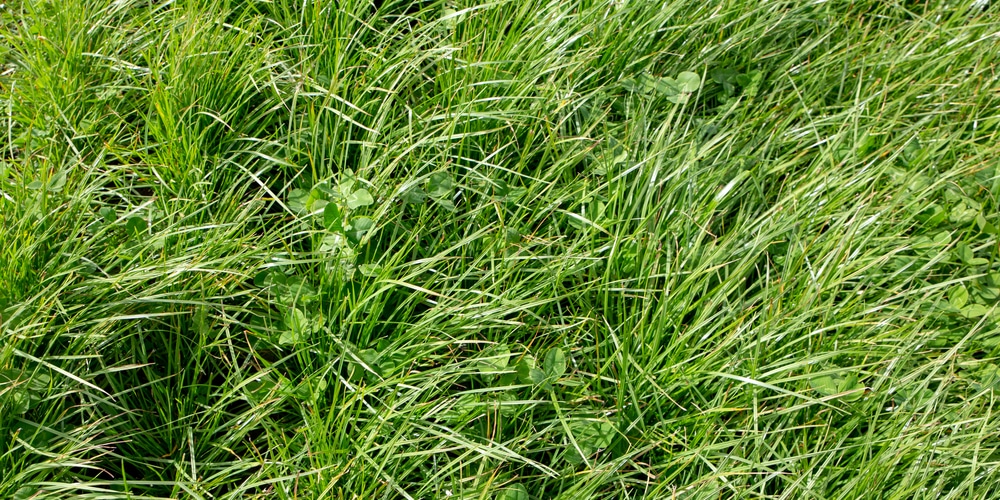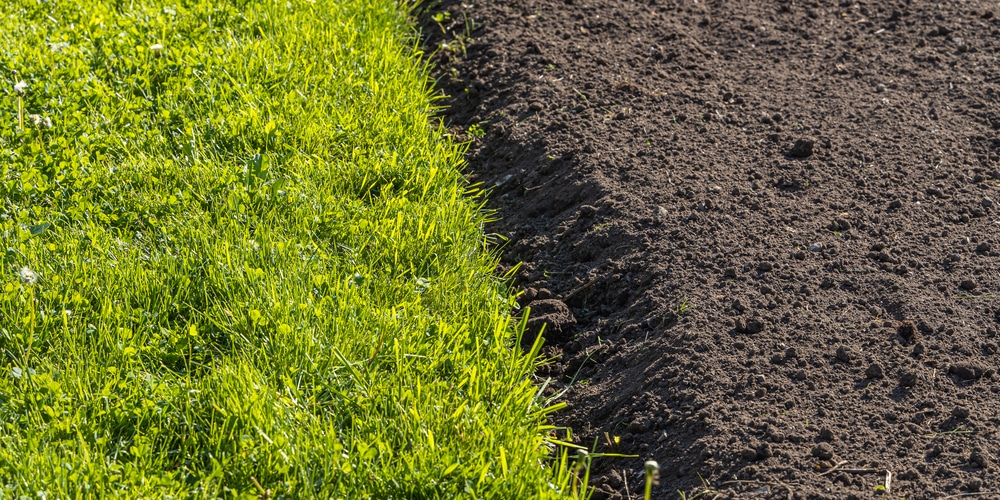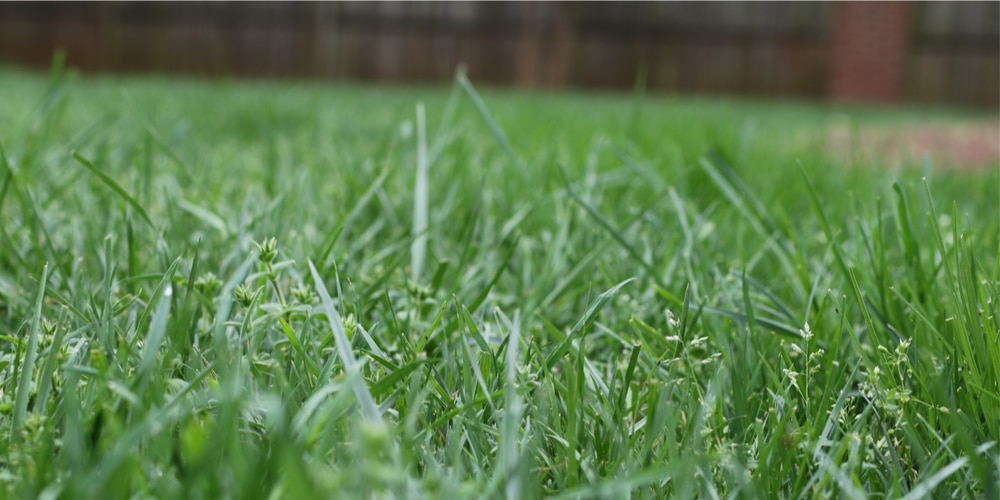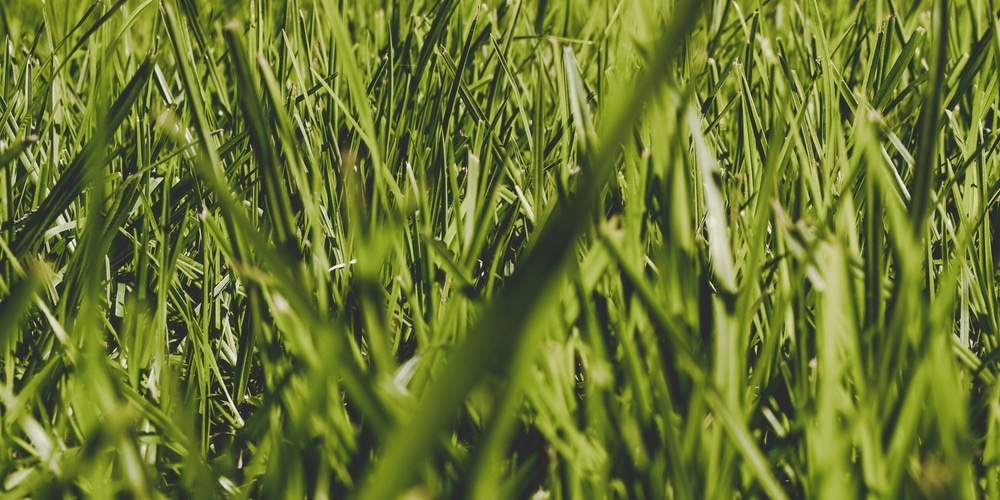If you have a shady lawn, you’re going to need grass that can thrive without always being under direct sunlight. Here’s a list of the best types of grass to that grow in the shade.
There are just some types of grass that will never do well in shady areas, such as Bermuda.
Warm Season Grass to Plant in the Shade
Zoysia
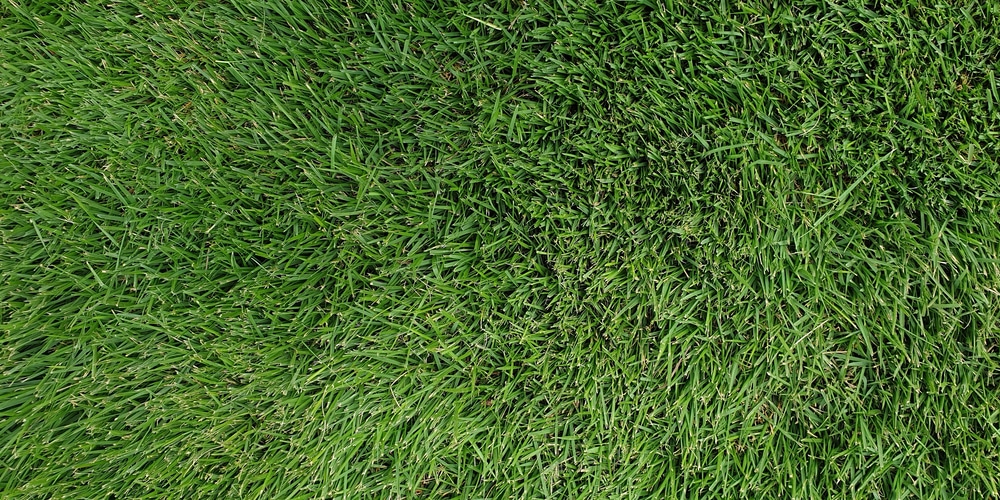
Zoysia grass varieties tend to be very shade tolerant. It needs sun, but it can survive in partial shade and it looks great even with just light shade during the day. This grass is a middle-ground between cool season and warm season types of grasses, so it has some features that other types of grass do not. Zoysia grass is high-maintenance, lives for a long time and takes up a lot of space. It can also be prone to pests and diseases.
Bluegrass/Rye Mix
The best type of grass to plant in the shade will often have bluegrass in it. Many different types of bluegrasses grow well in shade. These grasses are able to tolerate colder temperatures, which is helpful when considering having grass in the shade year round. Bluegrass does best when kept moist but doesn’t like soggy soil or standing water. This is one of the types of grass that can handle some foot traffic without getting worn down too much.
A mixture of bluegrass and rye is very durable and easy to grow. This mix is typically composed of 70% bluegrass and 30% of a less demanding type of grass such as ryegrass, which can grow in more shade than most other types.
Perennial Ryegrass
This is also another good type of grass to plant in the shade. It is a cool-season grass, which means it can take a beating during the winter months and still look sickly at times. This type of grass seems to do best when planted from seed as opposed to from plugs or sod.
Cool Season Grasses for the Shade
Kentucky Bluegrass
This type of grass is actually known for its shade tolerance. Kentucky bluegrass tends to thrive in areas where it gets anywhere from 4 hours to 6 hours of sunshine on any given day. It needs moist, well-drained soil but can also survive in dryer conditions. This type of grass is another good option for foot traffic.
Fescue (red or chewing)
Fescue is another type of grass that can survive in the shade relatively well. This is considered to be a bunch-type grass rather than a creeping type of grass, which means it has shorter blades and clumps together instead of spreading out like “creeping” types of grasses.
Buffalo grass
This type of grass can grow in the shade, but it does best when it gets at least 6 hours of sunlight every day. It typically thrives in dry climates because it doesn’t require a lot of water to survive. This type of grass is cold-hardy and drought-resistant, which makes it a great option for the shade.
Buffalo grass has a more natural look than some other types of grass, which makes it popular for homeowners who don’t want to make their lawn look like a “traditional” lawn. It is also very durable and able to handle foot traffic without getting worn down too much, but it can be susceptible to pests and diseases.
For more information about types of grass to plant in the shade or for help growing a lawn from scratch, contact your local professional landscaper. They’ll have all the tools and resources they need to help you choose a type of grass that can grow in your yard’s particular conditions.
Intermixing Grass Types
Mixing two types of grass together will give you a good chance at having a very nice lawn that looks great all year round.
There are many different types of grass that do well in the shade, but these are some of the best! Look for other types before you decide on planting.

